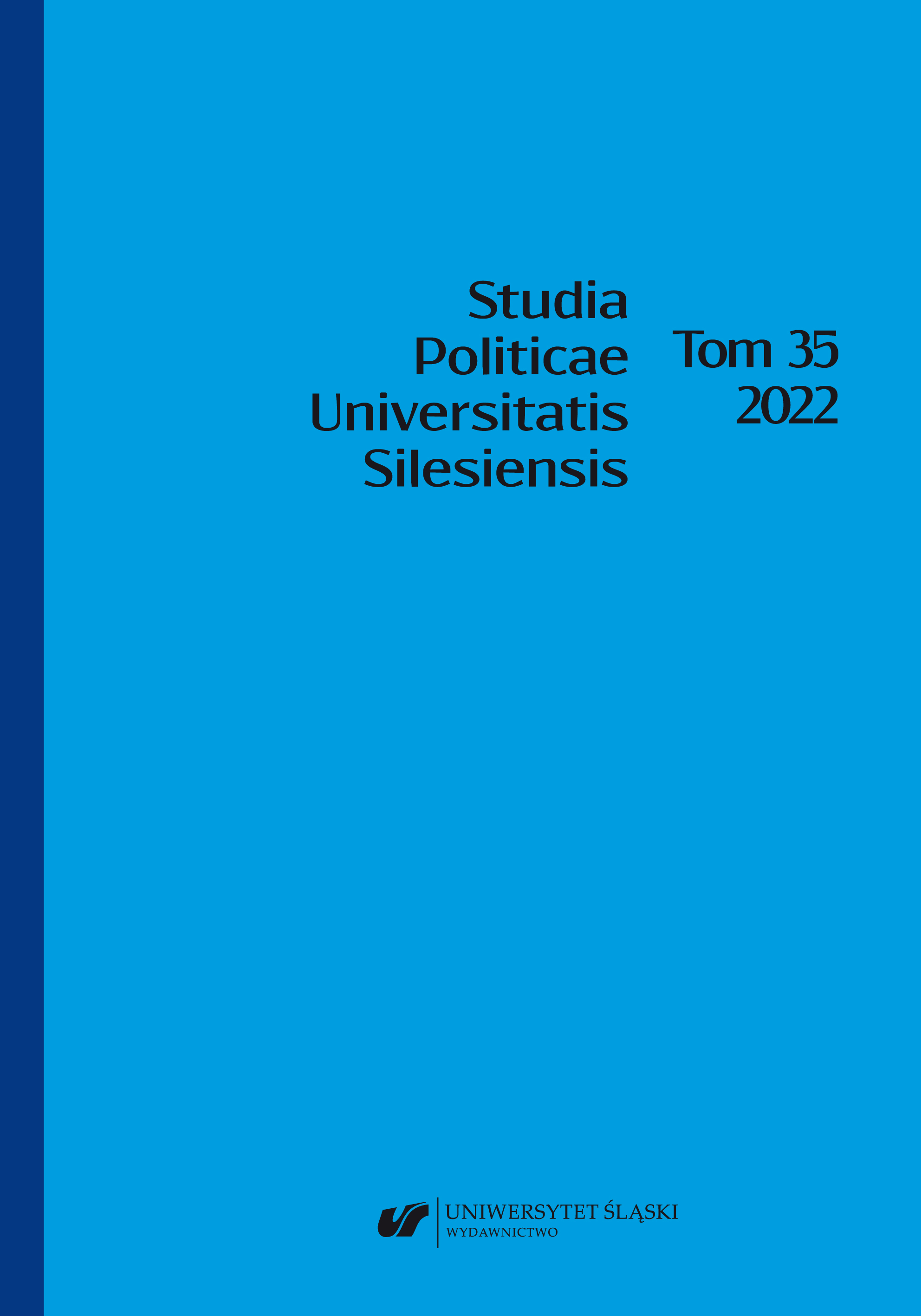Literature
Google Scholar
AbdulMagied, S. A. (2022). Othering, Identity, and Recognition: The Social Exclusion of the Constructed ‘Other’. Future Journal of Social Science, 1(1), 111–128.
Google Scholar
Chłopicki, W., & Brzozowska, D. (2021). Sophisticated humor against COVID-19: the Polish case. HUMOR, 34(2), 201–277.
Google Scholar
Cybulska, A. (2020). Zaufanie do polityków na przełomie maja i czerwca (Report No. 69). https://www.cbos.pl/SPISKOM.POL/2020/K_069_20.PDF (accessed: 14.02.2022)
Google Scholar
Cohen, C. J., & Kahne, J. (2012). New Media and Youth Political Action. Oakland: Youth and Participatory Politics Research.
Google Scholar
de Saint Laurent, C., Glăveanu, V. P., & Literat, I. (2021). Internet Memes as Partial Stories: Identifying Political Narratives in Coronavirus Memes. Social Media and Society, 7, 1–13.
Google Scholar
Denisova A. (2019). Internet Memes and Society. Social, Cultural, and Political Contexts. New York: Routledge.
Google Scholar
Entman, R. M. (1993). Framing: Toward clarification of a fractured paradigm. Journal of Communication, 43(4), 51–58.
Google Scholar
Frye, N. (1957). Anatomy of Criticism: Four Essays. Princeton: Princeton University Press.
Google Scholar
Galtung, J. (2006). Peace Journalism as an Ethical Challenge. GMJ: Mediterranean Edition, 1(2), 1–5.
Google Scholar
Guenther, L., Ruhrmann, G., Bischoff, J., Penzel, T., & Weber, A. (2020). Strategic framing: Analyzing memes posted by the German identitarian movement on Facebook. Social Media + Society, 6(1), 1–13.
Google Scholar
Hagström, L., & Gustafsson, K. (2019). Narrative power: how storytelling shapes East Asian international politics. Cambridge Review of International Affairs, 32(4), 387–406.
Google Scholar
Huntington, H. E. (2016). Pepper spray co and the American dream: Using synecdoche and metaphor to unlock internet memes’ visual political rhetoric. Communication Studies, 67(1), 77–93.
Google Scholar
Jenkins, H. (2006). Convergence culture: Where old and new media collide. New York: New York University Press.
Google Scholar
Knobel, M., & Lankshear, C. (2007). A new literacies sampler. New York: Peter Lang.
Google Scholar
Łotocki, Ł., & Mikiński, K. (2022). Sfery zgody i konfliktu w polskim dyskursie politycznym wokół strategii walki z pandemią COVID-19. Studia politologiczne, 65, 212–243.
Google Scholar
Makhortykh, M., & González Aguilar, J. M. (2020). Memory, politics and emotions: internet memes and protests in Venezuela and Ukraine. Continuum, 34(3), 342–362.
Google Scholar
Mularska-Kucharek, M. (2011). Zaufanie jako fundament życia społecznego na przykładzie badań w województwie łódzkim [Trust as the foundation of social life on the example of research in the Lodzkie Voivodship]. Studia Regionalne i Lokalne, 2(44), 76–91.
Google Scholar
Norgaard Kristensen, N., & Mortensen, M. (2021). ‛Don’t panic people! Trump will tweet the virus away’: meme contesting and confirming populist political leaders during the COVID 19 crisis. Information, Communication & Society, 24, 2442–2458.
Google Scholar
Norström, R., & Sarna, P. (2021). Internet memes in Covid-19 lockdown times in Poland. Comunicar, 29(67), 75–85.
Google Scholar
Oppenheimer, L. (2006). The Development of Enemy Images: A Theoretical Contribution. Peace and Conflict: Journal of Peace Psychology, 12(3), 269–292.
Google Scholar
Pidkuimukha, L., & Kiss, N. (2020). Battle of Narratives: Political Memes During the 2019 Ukrainian Presidential Election. Cognitive Studies, 20, 1–24.
Google Scholar
Sanecka-Tyczyńska, J. (2015). Ocena III Rzeczpospolitej – płaszczyzna polaryzacji współczesnej polskiej sceny politycznej. Annales Universitatis Paedagogicae Cracoviensis, 14, 99–114.
Google Scholar
Sarna, P., & Norström, R., (2022). Retoryka racji i emocji w czasach kryzysu [Rhetoric of reasons and emotions in times of crisis]. Res Rhetorica, 9(3), 80–97.
Google Scholar
Shifman, L. (2013). Memes in a digital world: Reconciling with a conceptual troublemaker. Journal of Computer-Mediated Communication, 18(3), 362–377.
Google Scholar
Shifman, L. (2014). Memes in Digital Culture. Cambridge and London: MIT Press.
Google Scholar
Sroka, J. (2019). Obrazkowe memy internetowe. [Pictorial Internet memes]. Warszawa: CeDeWu.
Google Scholar
Wasilewski, J. (2012). Opowieści o Polsce. Retoryka narracji [Tales about Poland. Rhetoric of narratives]. Warszawa: Studio Headmade.
Google Scholar
Wiggins, B. E. (2019). The Discursive Power of Memes in Digital Culture Ideology, Semiotics, and Intertextuality. New York: Routledge.
Google Scholar
Wielgosz, Ł. (2020). Trzy ujęcia polaryzacji politycznej. Wrocławskie studia politologiczne, 28, 32–52.
Google Scholar
Online sources
Google Scholar
Bajda, I. (2022, 16 January). 35 lat serialu “Alternatywy 4”. Cham u władzy, czyli niezapomniany Wilhelmi w roli Anioła. https://haloursynow.pl/pl/11_wiadomosci/19113_35-lat-serialu-alternatywy-4-cham-u-wladzy-czyli-niezapomniany-wilhelmi-w-roli-aniola.html (accessed: 25.01.2023).
Google Scholar
Besty (Ed.) (b.d.). #hehe. https://besty.pl/tag/hehe/strona/755 (accessed: 7.07.2023).
Google Scholar
Dziennik Polski (Ed.) (2020a, 12 May). Memy o koronawirusie i kwarantannie obnażają prawdziwe uczucia, ale uczą też profilaktyki przed Covid-19. https://dziennikpolski24.pl/memy-o-koronawirusie-i-kwarantannie-obnazaja-prawdziweuczucia-ale-ucza-tez-profilaktyki-przed-covid19/ga/c15-14753252/zd/42645871 (accessed: 7.07.2023).
Google Scholar
Dziennik Polski (Ed.) (2020b, 21 April). Memy o kwarantannie. Zobacz najlepsze memy o pandemii koronawirusa. https://dziennikpolski24.pl/memy-o-kwarantannie-zobacz-najlepsze-memy-o-epidemii-koronawirusa/ga/c15-14929164/zd/43009282 (accessed: 7.07.2023)
Google Scholar
Dziennik Zachodni (Ed.) (2020, 4 May). Odmrażanie gospodarki. Memy o luzowaniu obostrzeń w galeriach handlowych i muzeach trafiają w punkt. https://dziennikzachodni.pl/odmrazanie-gospodarki-memy-o-luzowaniu-obostrzen-wgaleriach-handlowych-i-muzeach-trafiaja-w-punkt/ga/c1-14950296/zd/43156558 (accessed: 7.07.2023)
Google Scholar
Eastern European Movies (2023). Sexmission (Seksmisja) – A Cult Classic of Polish Cinema. https://easterneuropeanmovies.com/articles/sexmission-seksmisja-acult-classic-of-polish-cinema (accessed: 25.01.2024).
Google Scholar
Eastern European Movies (b.d.). Teddy Bear. https://easterneuropeanmovies.com/comedy/teddy-bear (accessed: 25.01.2024).
Google Scholar
Głos Szczeciński (Ed.) (2020, 12 May). Memy o koronawirusie i kwarantannie obnażają prawdziwe uczucia, ale uczą też profilaktyki przed Covid-19. https://gs24.pl/memy-o-koronawirusie-i-kwarantannie-obnazaja-prawdziwe-uczuciaale-ucza-tez-profilaktyki-przed-covid19/ga/c15-14753252/zd/42793263 (accessed: 7.07.2023).
Google Scholar
Goorsky (2020, 25 July). Wypłaszczanie B-). [Image attached] [Status update]. Facebook. https://www.facebook.com/goorskypl/posts/pfbid037EfYBcTtDy‑ZBiGGZ7TBQ665byfsUmvECz6rdiLdckL9PUzQq7yYDhh4aNPohw8TSl (accessed: 8.07.2023).
Google Scholar
Gov.pl (b.d.). Coronavirus: information and recommendations. https://www.gov.pl/web/coronavirus (accessed: 25.01.2024).
Google Scholar
Koronawirus Memy (2020, 24 March). Cóż to za wojownik ????. [Image attached] [Status update].Facebook,https://www.facebook.com/Koronawirusmemy/photos/pb.100044615714493.-2207520000./144321987123354/?type=3 (accessed: 7.07.2023).
Google Scholar
Paczaizm (2020, b.d.). Lekarz do rządu mam zakaz mówienia o pandemii wszystko inne dali ludzie. https://paczaizm.pl/lekarz-od-rzadu-mam-zakaz-mowienia-opandemii-wszystko-inne-dali-ludzie/ (accessed: 7.07.2023).
Google Scholar
Politico (b.d). Boris Johnson’s former top adviser says herd immunity was UK plan to fight coronavirus. https://www.politico.eu/article/boris-johnsons-former-top-adviser-says-herd-immunity-was-uk-plan-to-fight-coronavirus/ (accessed: 25.01.2024).
Google Scholar
Portal i.pl (2020, 12 May). Memy o koronawirusie i kwarantannie obnażają prawdziwe uczucia, ale uczą też profilaktyki przed Covid-19. https://i.pl/memy-o-koronawirusie-i-kwarantannie-obnazaja-prawdziwe-uczucia-ale-ucza-tez-profilaktyki-przed-covid19/gh/c15-14753252/5?fbclid=IwAR0tapdmzRfWEAOKmzPik7EJYOjRiRydUoy95IRVo6omyitC_-boZGyVJlU (accessed: 7.07.2023).
Google Scholar
Sekcja Gimnastyczna (2020a, 16 March). Dzień świra, reż. Marek Koterski [Image attached] [Status update]. Facebook. https://www.facebook.com/SekcjaGimnastyczna/posts/pf bid02299HnR3uVThP7PdSEYoAPkfCaao6jLDiMVXxLHh‑T8esxxANtU7c7hqrB3mGpStsml (accessed: 8.07.2023).
Google Scholar
Sekcja Gimnastyczna (2020b, 2 May). Miś, reż. Stanisław Bareja [Image attached] [Status update]. Facebook. https://www.facebook.com/SekcjaGimnastyczna/posts/EXjXoZc6vvge8bKRc2P1SQydCWFZDgZaJ3vBPgvnDVoYhtnnTf4b7Gi‑ZaNl (accessed: 8.07.2023).
Google Scholar
Sekcja Gimnastyczna (2020c). Alternatywy 4, reż. Stanisław Bareja [Image attached] [Status update]. Facebook. https://www.facebook.com/SekcjaGimnastyczna/posts/pfbid09ZDNjk6Yqox35MpK4PaWeKobjnZAic8Dh77Z9TPJsFgSoS7RBu5ZJwe6EQ9qnf8Wl(accessed: 8.07.2023).
Google Scholar
Wichary, M. (2015, 9 October). “Alternatywy 4” in America. Bringing a TV show from my old home to my new one. https://mwichary.medium.com/alternatywy-4-in-america-82307c788475 (accessed: 25.01.2024).
Google Scholar


 https://doi.org/10.31261/spus.14838
https://doi.org/10.31261/spus.14838

 10.31261/spus
10.31261/spus